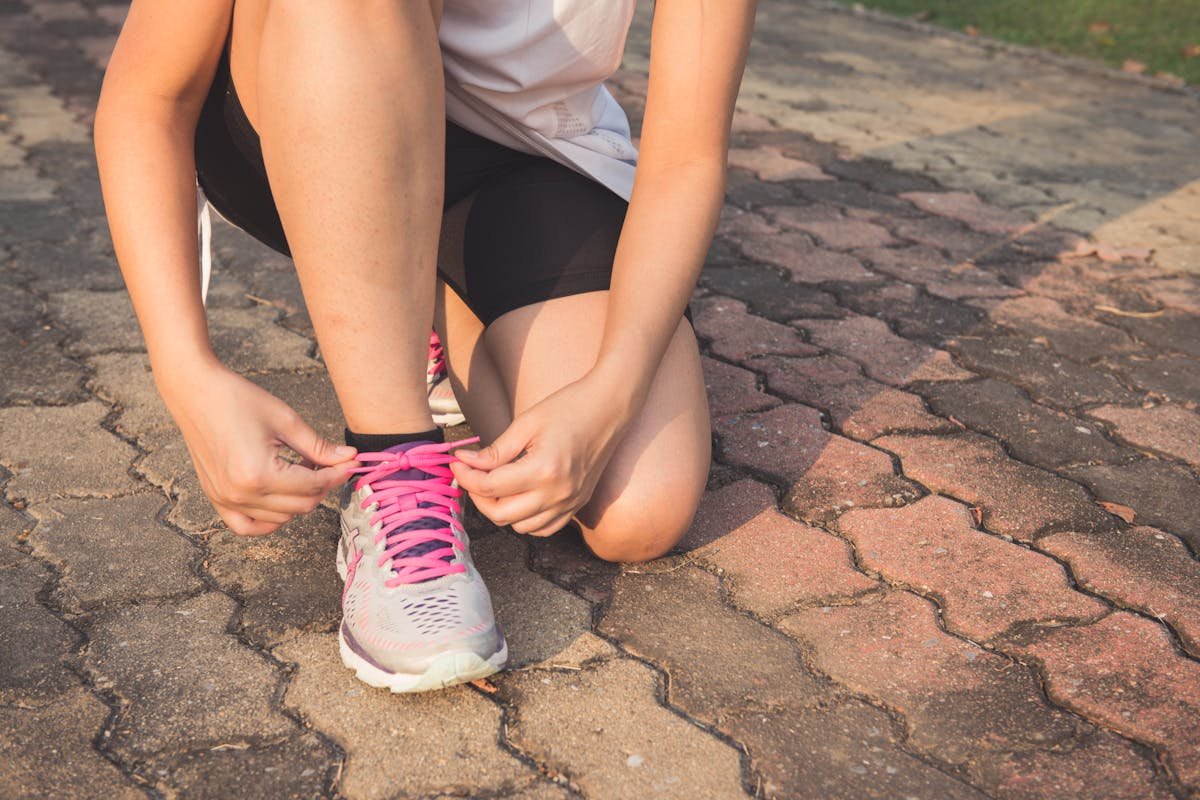Discover 9 foolproof tips for choosing your running shoes!
Sport / Date: 06-20-2025

When it comes to running, every detail counts to optimize performance and ensure comfort during training. Therefore, when thinking about improving performance, running shoes are an essential item that must be carefully analyzed to ensure good practice.
Also, knowing about the ideal footwear for you helps you have the proper support and safety during training, in addition to, of course, avoiding possible injuries in the lower limb region.
So, if you want to better understand the importance of knowing how to choose the right running shoes, stay here and find out the 9 foolproof tips for selecting the ideal pair for you!
How to choose the ideal running shoes?
Before starting your search for the ideal sports footwear, it is necessary to take some precautions to avoid any future problems, after all, this choice can significantly impact the comfort, performance and health of your feet.
Despite being an essential item for street running, some athletes do not take its particularities into account, which can significantly affect the experience, as well as the results.
Therefore, it is important to emphasize that you do not need the best sneakers in the world to run, but rather a model that adapts well to your type of stride and offers the necessary support during practice.
Identify your profile
The first step before purchasing a running shoe is to identify your profile , as each runner has different physical characteristics and movement patterns. From there, you can select a shoe that meets your specific needs, avoiding discomfort and also preventing injuries.
Considering factors such as your stride type, injury history, distance and frequency of your road running workouts, and the surface you run on will help you choose a shoe that has adequate support and cushioning for your workout.
Value comfort and functionality
Regardless of the level of practice, it is important to prioritize comfort and functionality, after all, these factors can directly influence your relationship with the sport.
Comfort is the basis of any sporting activity, so if you have well-fitting footwear, the risk of discomfort and blisters on your feet is reduced, allowing the athlete to fully focus on their sporting performance .
However, functionality also plays an essential role. Every step you take while running generates impacts, and a shoe designed for the right activity can minimize this effect, protecting your joints and muscles.
In short, correct shock absorption, support for each person's specific footstep and grip on the surface are factors that influence good sports performance and injury prevention.
9 foolproof tips for choosing your running shoes!
As you already know, choosing the right running shoes is crucial for runners of all levels. There is a wide variety of options on the market that are suited to a variety of personal preferences and needs. This allows each person to find a choice that aligns with their lifestyle and budget.
However, with the right combination of analysis and planning, it is possible to find the sports shoe that perfectly fits your personal needs for a more comfortable and successful running experience.
So, before choosing your running shoes, check out these 9 foolproof tips that will help you in this process!
1. Consider your weight and height
When it comes to selecting the right running shoes, consider your weight and height. These two factors have a significant impact on the type of support and cushioning your body needs during your run.
Larger runners, for example, often need shoes with extra cushioning to absorb repetitive impact, while lighter runners can opt for a softer, more flexible shoe.
Height also plays a role in determining the size and support of your shoe. Taller athletes may need a shoe with a thicker sole to balance the impact on their joints, while shorter athletes may want to select a lighter shoe to keep up with their agile pace.
2. Know your foot type
Before investing in a pair of running shoes, it is essential to know your foot type. The way your foot hits the ground while running, whether neutral, supinated or pronated, directly influences the choice of footwear.
A gait analysis can be performed by health professionals, such as physiotherapists. This assessment will help identify any deviations or irregularities in the way you step, allowing you to choose the product that meets your body's specific needs , thus avoiding discomfort and preventing possible injuries.
3. Analyze the insole
It is common to overlook the power of insoles in footwear, but do not underestimate their importance, as they play a crucial role in supporting your feet during physical activity.
There are different types of insoles, some of which are more neutral, while others offer support for “flat feet”. By knowing your foot type, you will be able to choose one that provides the support you need for running.
4. Consider the training location
The surface where the activity will be carried out is also a fundamental element, after all, this is a factor often ignored by some athletes. Knowing about the terrain and conditions helps when choosing footwear, as each type of ground produces a different impact on the motor apparatus.
In other words, issues such as stability and shock on the ground must be taken into account, after all, running on dirt, asphalt or a treadmill is completely different.
Running shoes are designed with different characteristics in mind for different types of terrain. If your workouts are mostly on paved surfaces, a shoe with cushioning will be effective in handling the repetitive impact of asphalt. On the other hand, if you enjoy exploring trails, a shoe with a grippier sole may be more appropriate.
5. Pay attention to the size
One of the most important aspects of choosing running shoes is selecting the correct size. This is because proper shoe fit not only affects comfort, but can also have a direct impact on your athletic performance and injury prevention.
Shoes that are too tight can cause discomfort, blisters, and even hurt your feet while running. On the other hand, shoes that are too loose will not provide the necessary support and can result in twisting or uneven wear.
In practice, the tip is to buy a size larger than your usual size . This can prevent possible foot injuries, as well as create a “breathing space” between the shoe and the foot, preventing the runner from losing a toenail due to friction in the area.
6. Evaluate the type of socks
When you go running, it is important to try on the shoes with the type of socks you normally wear. This type of recommendation is necessary to avoid discomfort or tightness.
Many athletes prefer to wear compression socks because they feel more comfortable and secure in them. However, sneakers are predominantly personal equipment. Therefore, what brings better results for one athlete will not necessarily bring better results for another.
7. Change your sneakers periodically
The lifespan of a sports shoe varies between 600 and 800 km, and in the case of competitions the duration is even shorter. On average, this mileage is close to 2 years of use .
Therefore, it is important to pay attention to the condition of your shoes. After all, over time and with continued use, the cushioning and support of the shoe decrease, increasing the risk of injuries and discomfort. Therefore, by replacing them, you avoid biomechanical problems that can arise with wear and tear.
In addition, other factors can influence the durability of the equipment, such as the runner's weight and training conditions . Therefore, it is recommended to keep an eye on it and replace it at the correct time.
8. Try the templates
When buying running shoes, the main tip is to try them on in the store and walk around a bit to assess the fit and comfort immediately. Pay attention to any pressure points, discomfort or areas that cause friction.
A good tip is to do a stride test. Almost all stores specializing in sports equipment have professionals on their staff who can help with this process.
9. Check the reviews
Before you make the final decision to buy a new pair of running shoes, you should take some time to research reviews. This can make all the difference. The opinions of other runners who have already tried the model you are considering can provide important information about the product's performance, comfort, and durability.
Look for reviews on running websites and/or even on social media. Read comments from athletes who share their personal experiences with the shoes, noting aspects such as fit, support, cushioning and durability.
Follow Us
Newsletter
Subscribe to our newsletter to stay updated with our latest news and offers.
We respect your privacy.Trending










